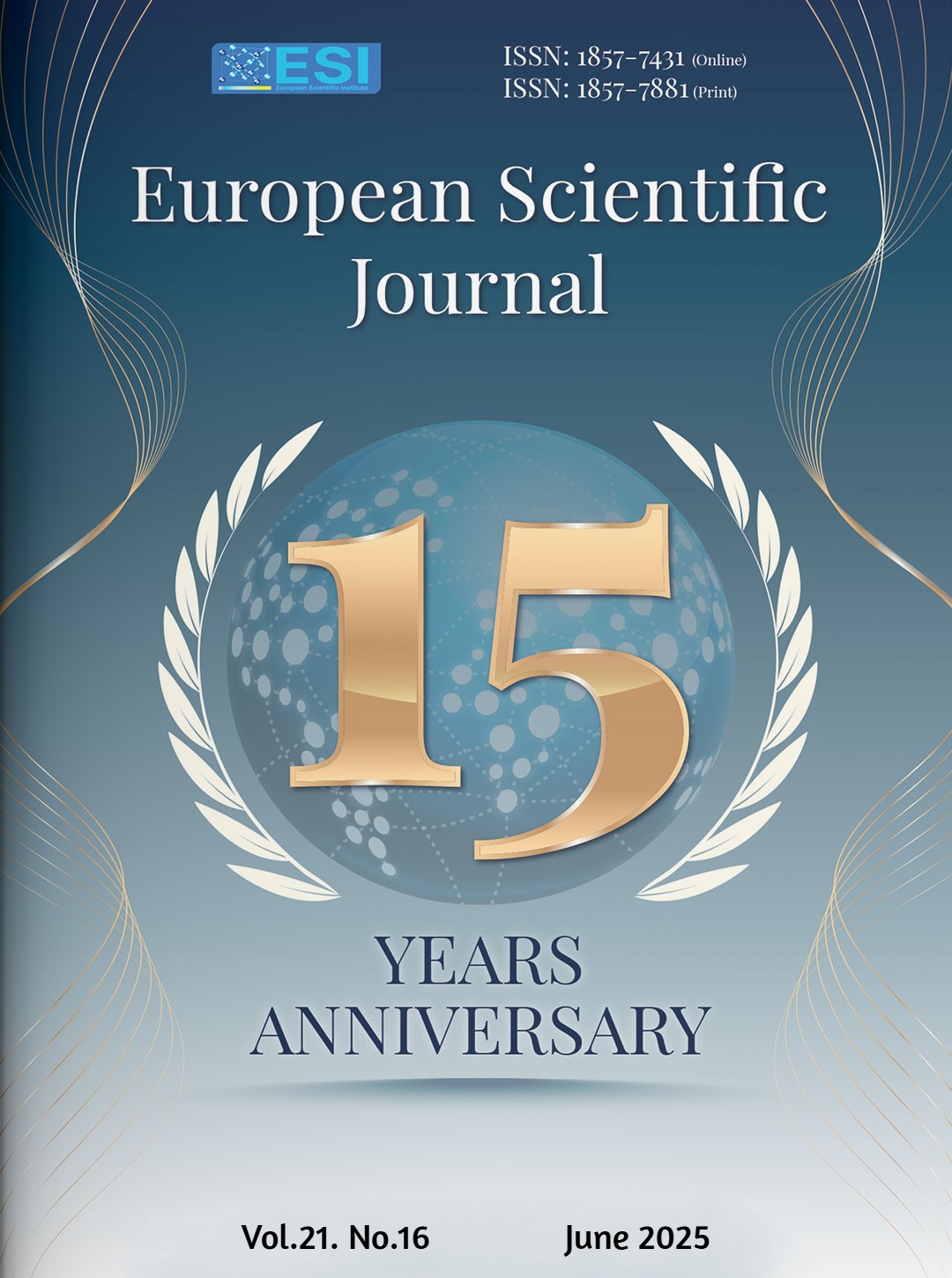Fluctuations des Prix du Pétrole, Subventions et Croissance Économique au Maroc (1998–2022)
Abstract
Cet article analyse l’impact des fluctuations des prix du pétrole et du régime de subventions sur la croissance économique du Maroc entre le premier trimestre 1998 et le quatrième trimestre 2022. En mobilisant une modélisation dynamique appliquée aux données trimestrielles, l’étude distingue les effets linéaires et asymétriques des variations des prix du pétrole, tout en intégrant l’effet d’un régime de subventions à travers une variable dichotomique construite selon les principales phases de réforme. Les résultats montrent que les hausses des prix du pétrole ont un effet significatif sur la croissance du PIB, tandis que les baisses n’ont pas d’impact direct mesurable. Par ailleurs, le régime de subventions joue un rôle stabilisateur en atténuant l’impact des chocs pétroliers à la hausse, bien que cet effet dépende du contexte institutionnel et budgétaire, notamment avant et après la . Cette dernière, marquée par la libéralisation progressive des prix, a profondément modifié les mécanismes d’ajustement économique. Cette étude souligne ainsi l’importance des politiques de subventions dans la préservation de la stabilité économique face à la volatilité des marchés pétroliers. Toutefois, la période post-2014, marquée par la réforme de la compensation et la libéralisation progressive des prix, mérite une attention spécifique dans l’analyse des dynamiques récentes. Enfin, des perspectives de recherche pourraient consister à intégrer d’autres variables macroéconomiques telles que l’inflation, le taux de change ou encore l’ouverture commerciale, afin d’approfondir la compréhension des déterminants de la croissance économique marocaine dans un contexte de chocs externes.
This article examines the impact of oil price fluctuations and the subsidy regime on Morocco’s economic growth between the first quarter of 1998 and the fourth quarter of 2022. By employing a dynamic modeling approach on quarterly data, the study distinguishes between the linear and asymmetric effects of oil price variations, while accounting for the influence of the subsidy system through a dichotomous variable reflecting key reform phases. The results reveal that increases in oil prices have a significant effect on GDP growth, whereas price decreases do not exhibit a measurable direct impact. Moreover, the subsidy regime plays a stabilizing role by mitigating the effects of upward oil price shocks, although this impact depends on the institutional and fiscal context, particularly before and after the 2014 reform. The latter, characterized by the gradual liberalization of fuel prices, has substantially altered the economic adjustment mechanisms. This study thus highlights the crucial role of subsidy policies in preserving economic stability in the face of oil market volatility. However, the post-2014 period, marked by compensation reforms and price liberalization, warrants specific attention when analyzing recent dynamics. Future research avenues could involve incorporating additional macroeconomic variables such as inflation, exchange rates, and trade openness to further deepen the understanding of the determinants of Morocco’s economic growth in a context of external shocks.
- Oui j’ai ajouté une référence en bibliographie. Cour des Comptes, (2014). Rapport sur Le système de compensation au Maroc Diagnostic et propositions de réforme. Rabat, janvier.
Downloads
Metrics
PlumX Statistics
References
2. Arouri, M. E. H., Jouini, J., & Nguyen, D. K. (2012). On the impacts of oil price fluctuations on European equity markets: Volatility spillover and hedging effectiveness. Energy Economics, 34(2), 611-617.
3. Baumeister, C., & Kilian, L. (2016). Forty years of oil price fluctuations: Why the price of oil may still surprise us. Journal of Economic Perspectives, 30(1), 139-160.
4. Berument, M. H., Ceylan, N. B., & Dogan, N. (2010). The impact of oil price shocks on the economic growth of selected MENA1 countries. The energy journal, 31(1), 149-176.
5. Bjornland, H. C. (2000). The dynamic effects of aggregate demand, supply and oil price shocks—a comparative study. The Manchester School, 68(5), 578-607.
6. Bouzid, A. (2012). The relationship of oil prices and economic growth in Tunisia: A vector error correction model analysis. The Romanian Economic Journal, 43, 3-22.
7. Brini, R., Jemmali, H. and Farroukh, A. (2016). Macroeconomic impacts of oil price shocks on inflation and real exchange rates : evidence from MENA economies. Topics in Middle Eastern and African Economies, Vol. 18 No.2, pp. 170-185.
8. Cour des Comptes, (2014). Rapport sur Le système de compensation au Maroc Diagnostic et propositions de réforme. Rabat, janvier.
9. Dabachi, U. M., Mahmood, S., Ahmad, A. U., Ismail, S., Farouq, I. S., Jakada, A. H., & Kabiru, K. (2020). Energy consumption, energy price, energy intensity environmental degradation, and economic growth nexus in African OPEC countries : evidence from simultaneous equations models. Journal of Environmental Treatment Techniques, 8(1), 403-409.
10. El khider, A., Hajhouj, H. (2024). L’impact de la libéralisation des prix du secteur des carburants, et son impact sur l’environnement économique marocain. Alternatives Managériales Economiques, 6(4), 309-330.
11. El-Anshasy, A., Bradley, M. D., & Joutzl, F. (2005). Evidence on the role of oil prices in Venezuela’s economic Performance: 1950-2001. Working paper, university of Washington.
12. El-Anshasy, A., Mohaddes, K., & Nugent, J. B. (2017). Volatility and Institutions: Cross-Country Evidence from Major Oil Producers-Dallas Fed. Working Paper No. 310-Oil.
13. Farzanegan, M. R., & Markwardt, G. (2009). The effects of oil price shocks on the Iranian economy. Energy economics, 31(1), 134-151.
14. Ferderer, J. P. (1996). Oil price volatility and the macroeconomy. Journal of macroeconomics, 18(1), 1-26.
15. Foudeh, M. (2017). The long run effects of oil prices on economic growth: The case of Saudi Arabia. International Journal of Energy Economics and Policy, 7(6), 171-192.
16. Gershon, O., Ezenwa, N. E., & Osabohien, R. (2019). Implications of oil price shocks on net oil-importing African countries. Heliyon, 5(8).
17. Ghalayini, L. (2011). The interaction between oil price and economic growth. Middle Eastern Finance and Economics, 13(21), 127-141.
18. Hamilton, J. D. (1983). Oil and the macroeconomy since World War II. Journal of political economy, 91(2), 228-248.
19. Hamilton, J. D. (2009). Causes and Consequences of the Oil Shock of 2007-08. National Bureau of Economic Research.
20. Hooker, M. A. (1996). What happened to the oil price-macroeconomy relationship?. Journal of monetary Economics, 38(2), 195-213.
21. Jiménez-Rodríguez, R., & Sánchez, M. (2005). Oil price shocks and real GDP growth: empirical evidence for some OECD countries. Applied economics, 37(2), 201-228.
22. Joëts, M., Mignon, V., & Razafindrabe, T. (2018). Oil market volatility: Is macroeconomic uncertainty systematically transmitted to oil prices?. Uncertainty, Expectations and Asset Price Dynamics: Essays in Honor of Georges Prat, 31-50.
23. Kilian, L., & Vigfusson, R. J. (2011). Nonlinearities in the oil price–output relationship. Macroeconomic Dynamics, 15(S3), 337-363.
24. Kilian, L., & Zhou, X. (2020). Oil prices, gasoline prices and inflation expectations: A new model and new facts (No. 8516). CESifo Working Paper.
25. Lamy AOUZAL, L. (2018). Impact de la dynamique des cours de pétrole sur la croissance économique. International Review of Economics, Management and Law Research, 1(1).
26. Mehrara, M., & Oskoui, K. N. (2007). The sources of macroeconomic fluctuations in oil exporting countries: A comparative study. Economic Modelling, 24(3), 365-379.
27. Mgbame, C. O., Donwa, P. A., & Onyeokweni, O. V. (2015). Impact of oil price volatility on economic growth: Conceptual perspective. International Journal of Multidisciplinary Research and Development, 2(9), 80-85.
28. Miguel, C. D., Manzano, B., & Martm-Moreno, J. M. (2003). Oil price shocks and aggregate fluctuations. The Energy Journal, 24(2), 47-61.
29. Mork, K. A. (1989). Oil and the macroeconomy when prices go up and down: an extension of Hamilton's results. Journal of political Economy, 97(3), 740-744.
30. Mory, J. F. (1993). Oil prices and economic activity: is the relationship symmetric?. The Energy Journal, 151-161.
31. Murshed, M., & Tanha, M. M. (2021). Oil price shocks and renewable energy transition: Empirical evidence from net oil-importing South Asian economies. Energy, Ecology and Environment, 6(3), 183-203.
32. Odhiambo, N. (2020). Oil price and economic growth of oil-importing countries: A review of international literature. Applied Econometrics and International Development, 20(1), 129-151.
33. Office des Changes. (2022). Rapport annuel du commerce extérieur 2021.
34. Okonju, C. (2009). Oil price fluctuations and its effects on growth. Journal of historical economics, 2(5), 15-18.
35. Papapetrou, E. (2001). Oil price shocks, stock market, economic activity and employment in Greece. Energy economics, 23(5), 511-532.
36. Raheem, I. D. (2017). Asymmetry and break effects of oil price-macroeconomic fundamentals dynamics: The trade effect channel. The Journal of Economic Asymmetries, 16, 12-25.
37. Rahman, M. H., & Majumder, S. C. (2021). The impact of electricity production sources and GDP on CO2 emission in Bangladesh: A short-run dynamic. Indonesian Journal of Sustainability Accounting and Management, 5(2), 198-208.
38. Ritahi, O., & Echaoui, A. (2025). Macroeconomic Effects of Raising Oil Prices: Insights from Morocco. International Journal of Energy Economics and Policy, 15(2), 380-390.
39. Selim, H., & Zaki, C. (2016). The institutional curse of natural resources in the Arab world. Understanding and avoiding the oil curse in resource-rich arab economies, 322-72.
40. Sill, K. (2007). The macroeconomics of oil shocks. Federal Reserve Bank of Philadelphia, Business Review, 1(1), 21-31.
41. Van Eyden, R., Difeto, M., Gupta, R., & Wohar, M. E. (2019). Oil price volatility and economic growth: Evidence from advanced economies using more than a century’s data. Applied energy, 233, 612-621.
Copyright (c) 2025 Hicham Saidi

This work is licensed under a Creative Commons Attribution 4.0 International License.








